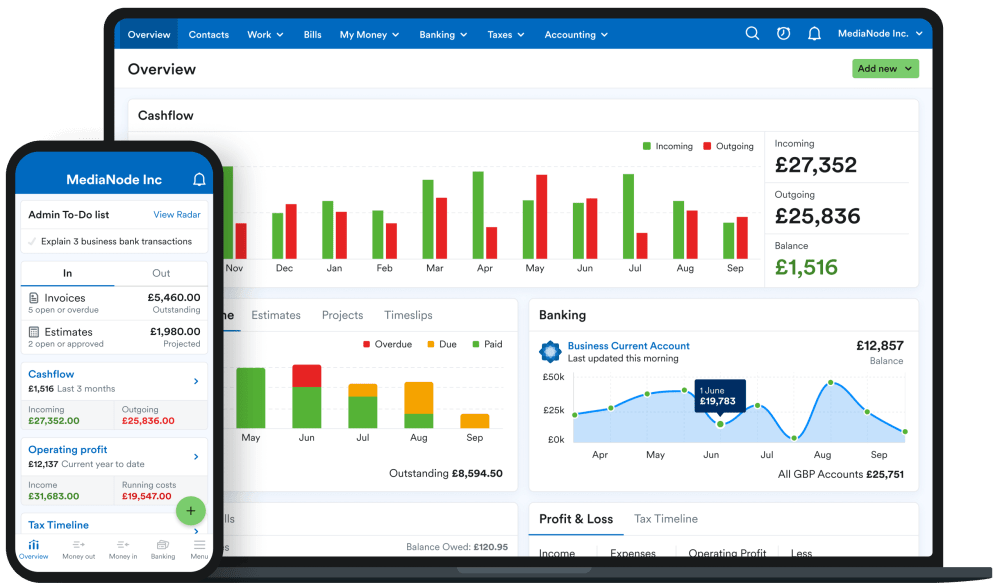Class 4 National Insurance: what you need to know
National Insurance is money paid to HMRC by employees, employers, and the self-employed. Class 4 National Insurance is paid by self-employed people on profits over £12,570 for the tax year in return for certain state benefits. You can find out more about National Insurance on our accounting glossary.
Example: how to calculate Class 4 National Insurance contributions
A self-employed landscape gardener is calculating their Class 4 National Insurance for the 2025/26 tax year. In order to work out how much Class 4 National Insurance they are due to pay, they need to know three things:
- Their taxable profit: £27,000
- Their Personal Allowance: £12,570 for most taxpayers
- The Class 4 National Insurance rate for their profit total: 6%
As their taxable profit is over £12,570, they are due to pay Class 4 contributions. They work out how much is subject to Class 4 deductions by subtracting their Personal Allowance from their profit total:
£27,000 - £12,570 = £14,430
They then calculate how much they are due to pay:
£14,430 x 6% = £865.80 in Class 4 National Insurance contributions
How to pay Class 4 National Insurance contributions
Class 4 National Insurance contributions are usually calculated annually as part of your Self Assessment tax return. The total amount of contributions due will be included in the total bill, which includes Income Tax, following completion of your return.
| Online or telephone banking (Faster Payments) | Same or next day |
| CHAPS | Same or next day |
| Bacs | Three working days |
| Business credit card (1.5% charge, personal credit cards are no longer accepted) | Three working days |
| Direct Debit | Three working days |
| Standing order | Three working days |
Online or telephone banking: If you’re paying by online or telephone banking (Faster Payments, CHAPS or Bacs) details for the HMRC bank account you should pay your tax bill into on the government’s website.
Debit card or business credit card: If you are paying by debit or credit card you can do so by following the links from your HMRC online account.
Cheque: You can pay your income tax bill with a cheque made payable to ‘HM Revenue and Customs only’ followed by your Unique Taxpayer Reference (UTR) number. It should be posted along with your paying-in slip to HMRC, Direct, BX5 5BD – no street name, city name or PO Box is required.
Direct Debit: You can set up a Direct Debit from your HMRC online account. The first time you set up a Direct Debit for Self Assessment allow at least five working days the before you submit your return to ensure the payment is taken from your account in time. Thereafter allow for at least three days. Note that you have to set up a new direct debit every time you wish to make a payment and that payment on account requires a separate Direct Debit.
At your bank or building society: You can only pay your Income Tax bill at your bank or building society if you still get paper statements from HMRC and have the paying-in slip they sent to you in the post. Payments can be made by cash or cheque made payable to ‘HM Revenue and Customs only’ followed by your Unique Taxpayer Reference (UTR) followed by the letter ‘K’.
